Home >Technology peripherals >AI >Tsinghua University's brain-inspired chip Tianjixin X appears on the cover of Science, a robot version of cat and mouse
Tsinghua University's brain-inspired chip Tianjixin X appears on the cover of Science, a robot version of cat and mouse
- WBOYWBOYWBOYWBOYWBOYWBOYWBOYWBOYWBOYWBOYWBOYWBOYWBforward
- 2023-04-14 17:01:031737browse
A robot version of the cat-and-mouse game hosted by Tsinghua University appeared on the cover of Science.
The Tom Cat here has a new name: "Tianji Cat". It is equipped with the latest research results of Tsinghua University's brain-inspired chips - a 28nm neuromorphic computing chip called TianjicX.
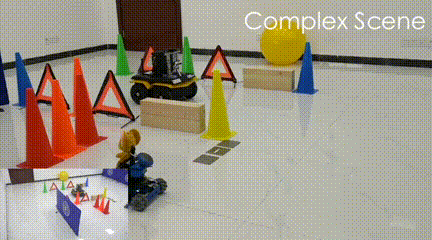
Its task is to catch a randomly running electronic mouse: in a complex dynamic environment, various Obstacles are randomly and dynamically placed in different locations. "Tianji Cat" needs to track the mouse through visual recognition, sound tracking, or a combination of both, and then move toward the mouse without colliding with the obstacles, and finally chase the mouse. Get on it.
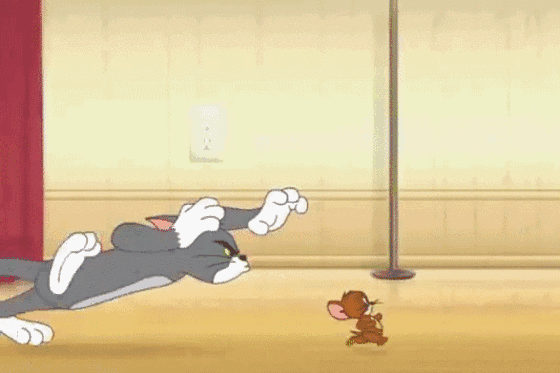
In this process, "Tianjimao" needs to realize speech recognition, sound source localization, and target in real-time scenarios Detection, obstacle avoidance and decision-making, while TianjicX can simultaneously run multiple AI algorithms across computing paradigms in an energy-saving manner and handle multiple robot coordination methods; under the same task, TianjicX’s power consumption is half that of NVIDIA AI chips , the latency of running multiple networks is significantly reduced by 79.09 times!
"An important milestone in the field of artificial intelligence" has achieved another breakthrough
In August 2019, Professor Shi Luping's team at Tsinghua University developed the world's first brain-inspired computing chip "Tianji" (Tianjic) Core", appeared on the cover of Nature, and was praised as "an important milestone in the field of artificial intelligence" by Nature editor-in-chief Dr. Skipper!
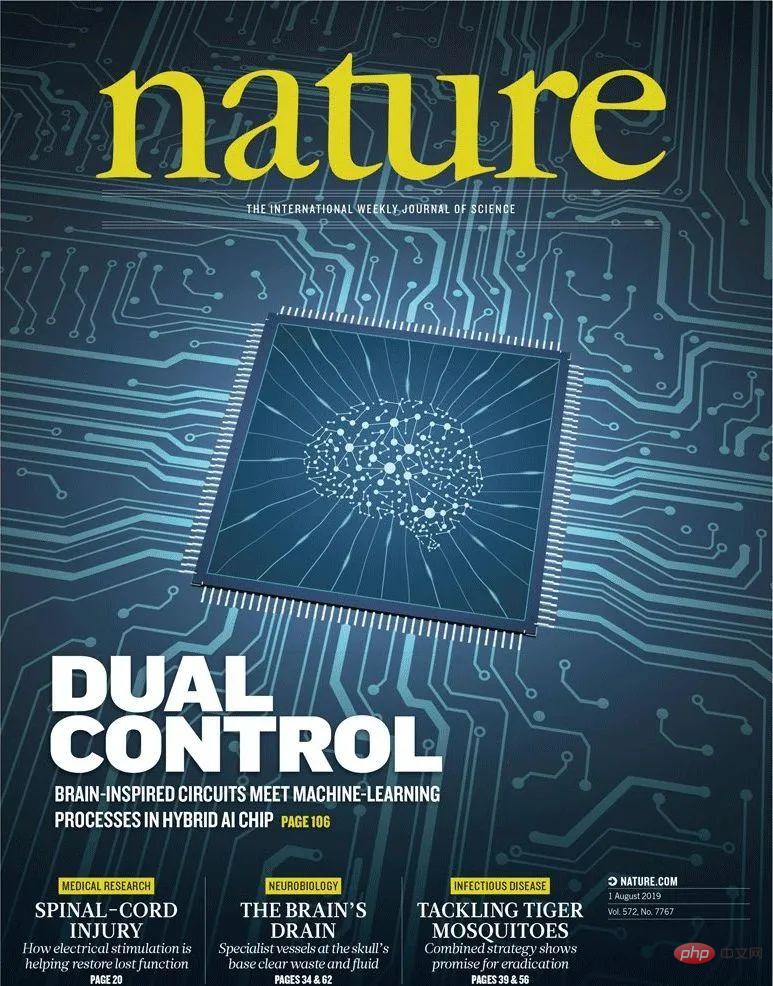
At that time, the bicycle equipped with the "Tianji core" realized true self-propelledness and could independently control balance, avoidance, etc. obstacles, recognize voice commands, and detect pedestrians ahead.
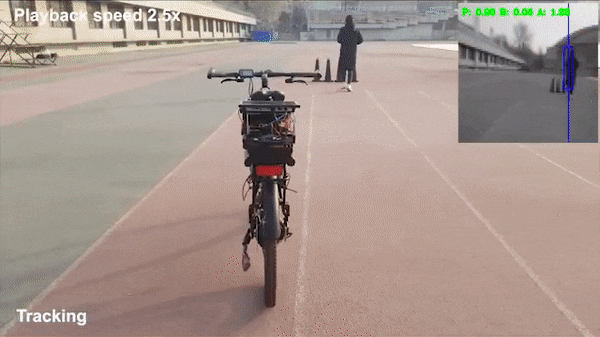
That was the first time that a Chinese chip was featured in Nature, and it also became one of the annual hot research topics in the scientific community in 2019. one.
This time, the Tsinghua University team developed the TianjicX chip based on the previous one, which supports adaptive allocation of computing resources and execution time scheduling of each task, solving the current mobile problem. Difficulties in the development of intelligent robot computing hardware.
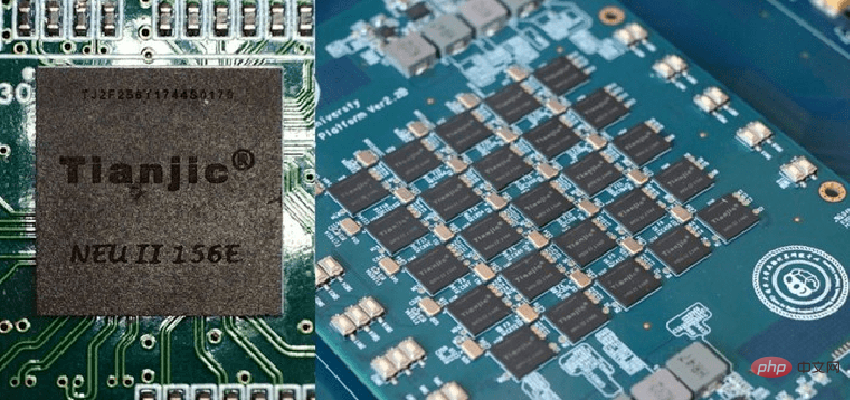
Speaking of problems, the road to using neural network (NN) algorithms to make robots intelligent has been going on for a long time, but It is necessary to realize the concurrent execution of multiple NNs, with low latency and high efficiency, as well as asynchronous execution and flexible interaction. I am afraid no one can do this yet.
Overcoming the key challenges of neuromorphic chips
The so-called neuromorphic computing chip is a chip that imitates the human nervous system computing framework and computing mode. It is based on decentralized non- Von Neumann architecture can execute multiple neural network models simultaneously.
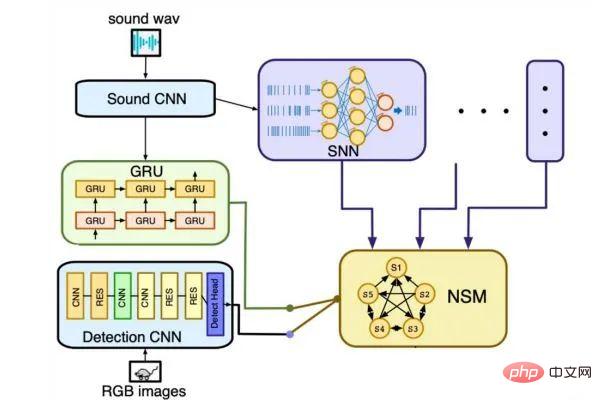
However, general neuromorphic chips usually use spatial slicing to pre-configure the core and process the neural network in a pipelined manner, each Preconfigured operations must be repeated every time. This inherent bottleneck prevents existing computing hardware from implementing multiple intensive algorithms locally and achieving low latency and high efficiency.
Therefore, the research and development of TianjicX chips faces two key challenges:
First, it must meet the latency-concurrency-power (LCP) Performance requirements, especially for the implementation of various neural networks;
The second is to maintain the independent execution of each task without interference, while providing support for interaction between tasks.
In order to overcome these challenges, R&D personnel conducted a series of designs from different levels such as architecture, chip and model deployment.
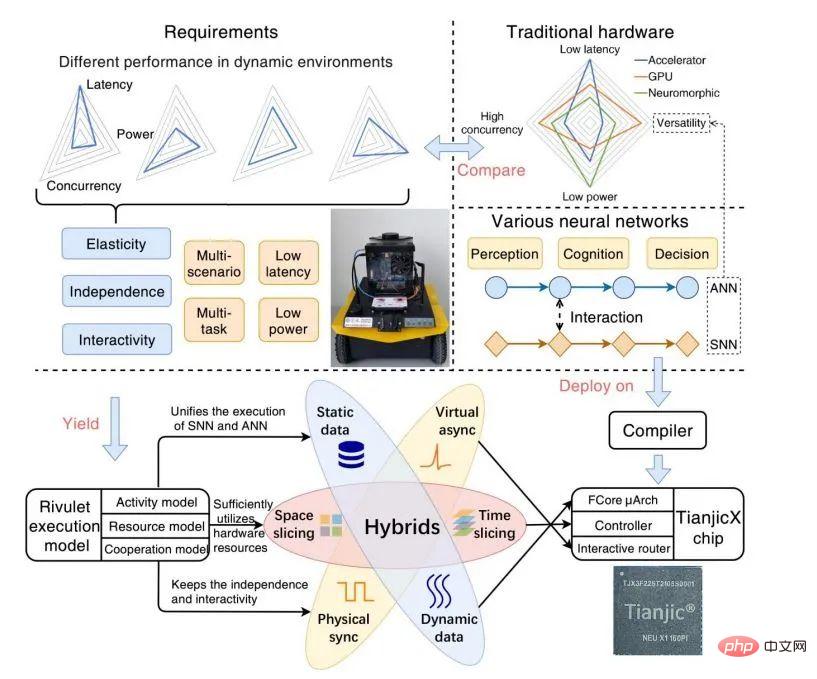
1. Infrastructure - Rivulet execution model
In this model, each spatial unit has its memory and controller for calculation, unifying neural networks and SNN into "static data" and "dynamic data". Static data is fixed in the corresponding memory, and dynamic data It flows between adjacent execution units.
This makes Rivulet a bridge between robot computing power requirements and hardware implementation, abstracting the execution of neural network tasks through the distribution of static data and the streaming of dynamic data. , using time and space slicing to achieve elastic resource allocation for each activity, and perform configurable mixed synchronous and asynchronous grouping.
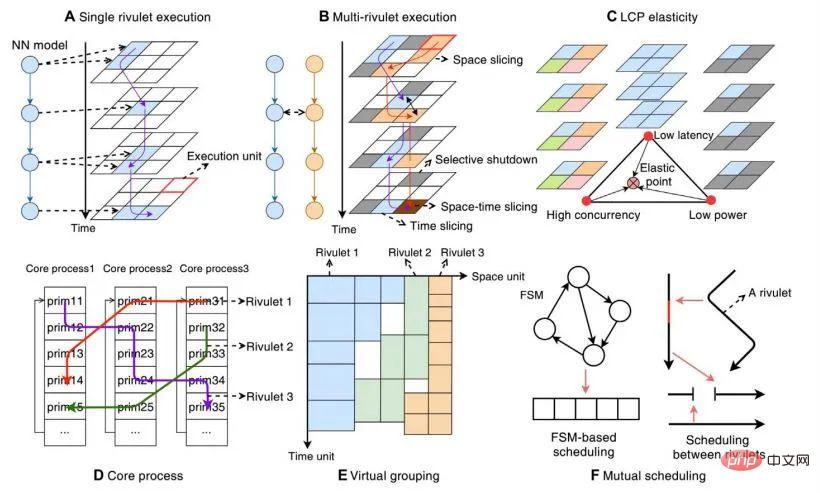
2. Chip hardware
Based on the Rivulet model , Tsinghua researchers designed and produced the TianjicX chip based on the complementary metal oxide semiconductor (CMOS) of the 28nm process. It integrates 160 configurable cross-computing paradigm cores (FCore), with massive parallel computing units, rich on-chip memory, and arbitrarily configurable primitive sequences for each core.

The controller only occupies about 1% of the FCore area, but significantly improves the flexibility of task execution and interaction and efficiency. The core memory module consists of five static random access memory (SRAM) blocks with a total capacity of 144 KB. Through the high-width parallel read and write access interface, the entire chip can have a memory access bandwidth of up to 5.12TB/s at 400MHz. Due to the optimized on-chip memory utilization, the computing power per unit area is as high as 0.2 TOPS/mm2.
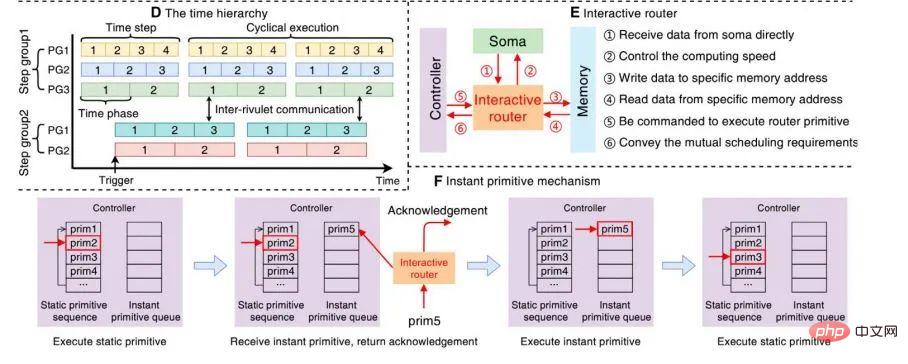
To automatically generate fast and appropriate policies, the compiler stack uses a spatiotemporal mapping approach that unifies various neural networks To meet hardware functional constraints, including original transformation and quantization, multiple tasks can be flexibly configured according to the actual needs of different scenarios.
3. Significantly improve robot performance
To demonstrate the capabilities of TianjicX, researchers deployed 4 TianjicX arrays on multi-intelligent tasks In the mobile robot, equipped with multi-modal sensors, each chip can be activated individually, while in the cat-and-mouse experiment, Tianji Cat only activated one TianjicX.

In a complex and dynamic environment, Tianjimao demonstrates how to use a variety of technologies while using very little energy. Neural network algorithms are used to complete speech recognition, sound source localization, object detection, obstacle avoidance and decision-making in real-time scenarios.
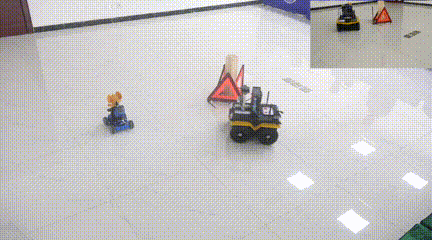

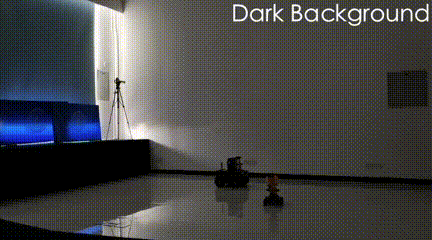
##Complex environment with multiple obstacles:
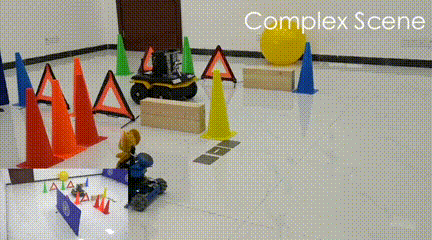
In the future, further explore more possibilities
TianjicX opens up the research and development of mobile intelligent robot computing hardware For most commercial robots, they usually follow predictable routines in warehouses or factories. For more complex scenarios, they also rely on human remote control, or must maintain contact with remote data centers. Wireless connections.
The powerful capabilities demonstrated by TianjicX chips can not only be used to improve the intelligence level of robots, but also provide ideas for alternative computing architecture design methods. "For robots, this ability is very important, allowing autonomous systems to operate autonomously for longer periods of time in hard-to-reach environments," said Jeffrey Krichmar of the University of California, Irvine.
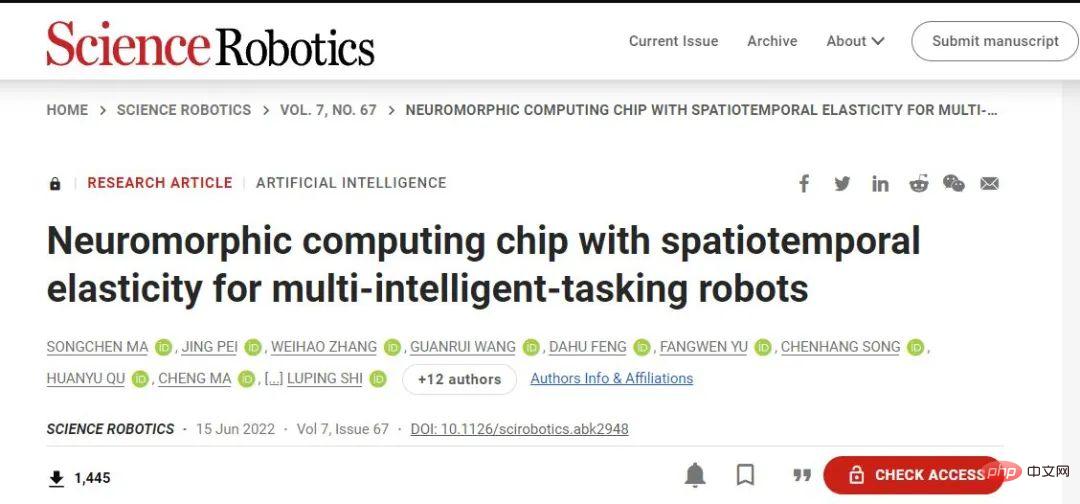
At the end of the paper, the author writes: “In the future, we will continue to study the combination of neuromorphic computing hardware and robot computing, and explore more unmanned robots. Possibility.”
##Paper title: Neuromorphic computing chip with spatiotemporal elasticity for multi-intelligent-tasking robotsDOI: 10.1126/scirobotics.abk2948The above is the detailed content of Tsinghua University's brain-inspired chip Tianjixin X appears on the cover of Science, a robot version of cat and mouse. For more information, please follow other related articles on the PHP Chinese website!
Related articles
See more- Technology trends to watch in 2023
- How Artificial Intelligence is Bringing New Everyday Work to Data Center Teams
- Can artificial intelligence or automation solve the problem of low energy efficiency in buildings?
- OpenAI co-founder interviewed by Huang Renxun: GPT-4's reasoning capabilities have not yet reached expectations
- Microsoft's Bing surpasses Google in search traffic thanks to OpenAI technology

